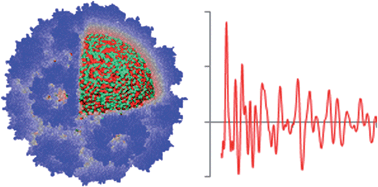Structure and photoelectrochemistry of a virus capsid–TiO2 nanocomposite
Abstract
The use of protein templates to direct the formation of inorganic

* Corresponding authors
a
Department of Chemistry & Biochemistry, Montana State University, Bozeman, MT, USA
E-mail:
tdouglas@chemistry.montana.edu
Fax: +1 406-994-5407
Tel: +1 406-994-6566
b Astrobiology Biogeocatalysis Research Center, Montana State University, Bozeman, MT, USA
c Department of Chemistry, Montana Tech of the University of Montana, Butte, MT, USA
d Department of Chemistry and Department of Geosciences, Stony Brook University, Stony Brook, NY, USA
The use of protein templates to direct the formation of inorganic

 Please wait while we load your content...
Something went wrong. Try again?
Please wait while we load your content...
Something went wrong. Try again?
C. Jolley, M. Klem, R. Harrington, J. Parise and T. Douglas, Nanoscale, 2011, 3, 1004 DOI: 10.1039/C0NR00378F
To request permission to reproduce material from this article, please go to the Copyright Clearance Center request page.
If you are an author contributing to an RSC publication, you do not need to request permission provided correct acknowledgement is given.
If you are the author of this article, you do not need to request permission to reproduce figures and diagrams provided correct acknowledgement is given. If you want to reproduce the whole article in a third-party publication (excluding your thesis/dissertation for which permission is not required) please go to the Copyright Clearance Center request page.
Read more about how to correctly acknowledge RSC content.
 Fetching data from CrossRef.
Fetching data from CrossRef.
This may take some time to load.
Loading related content
